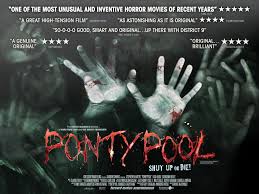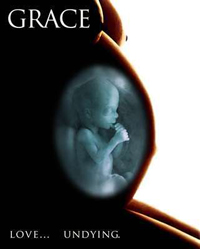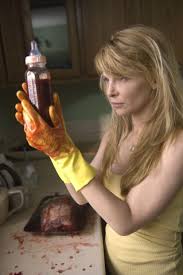

Rating:
Startle Scenes: †
Atmosphere: †††
Character development: ††††
The Monster: ††
Depth (horror class concepts): †††
The film mainly revolves around May; who as a kid, endured the insecurities of having a lazy eye, and was traumatized by being an outcast because of her physical defect. Consequently, as an adult she develops problems with her social life. She then develops a fascination with individual body parts, and weird ways to channel herself.
My initial impressions of the movie was that it was going to be a sick slaughter-fest of some sort, with mystical and demonic elements (the doll’s fault). I was expecting a bigger pool of bloody victims, and much more sick kills by May. Watching the whole film was a very underwhelming experience for me. The transitions where very boring and slow. It seemed more like a documentary than a slasher flick. Most of the time, I only felt mere pity for May’s life.
However, dragging buildup is saved by its deeper social implications. The character of May drowns in a kind of an escapist fantasy wherein she assumes a more dominating role by deconstructing (literally) the expectations and limits society imposes on her, in her own little twisted ways. She manifests this in several scenes.
Critical Analysis: Text and Context
Just as how Frankenstein’s Monster’s body can be cut, manipulated, twisted, switched, and reproduced again and again, the same goes for its text and how it reflects and influences the context it belongs to. In looking at May as a modern allusion of the monster of Frankenstein, one encounters parallels between Frankenstein the monster itself, and the text as a whole (whether as a film, play, or a novel); and how it is a construct of the society where it belongs.
As O’Flinn suggests, in the third category where alteration and realignment of a text happens, namely the way in which the movement of history itself refocuses a text and reorders its elements. Frankenstein, he likes to argue, meant certain thing irrespective of intention. He explains that images need to be repeatedly broken up and reconstituted if they are to continue to touch people, which is one of the reasons why horror films that are thirty or forty years old can often seem simply boring or preposterous to a later audience. In this case May, as a reconstitution and reinterpretation, aims to reflect certain realities of the current society in its effort to make Frankenstein relevant to the generation of its audience.
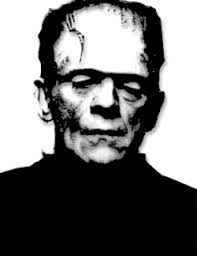
Strongest Elements of the Movie:
Following this logic, May has a lot to say about and to the society it belongs, through some of its memorable scenes and elements.
The Doll Named Suzie


This creepy caged doll given to May by her mother really evokes a supernatural vibe to the somewhat dull setting of the movie. It mainly serves as a conduit for everything that is happening beneath her seemingly dull composure. One can see this in the symbolic cracks slowly manifesting on the case’s glass surface; it reflects May slowly breaking free from the expectations and limitations imposed on her. Moreover, the doll is her best friend. She talks to her, asks her for advice. The doll is nothing more but a projection of herself. Thus, she channels her repressed energies (sexualities) onto the doll; where she can see something concrete, something tangible, manageable, something contained; for so long she kept the doll inside its glass cage, reflecting her own situation.
She makes her own clothes
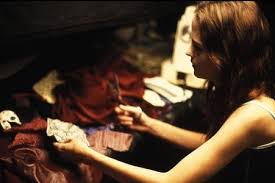
Clothes are one kind of social and cultural artifacts. A signifier of status and roles; A way of signifying and maintaining the status quo. In some ways, May challenges and go against pre-determined roles, norms, and conventions through making clothes for herself. This fact is still consistent in her mantra of being in control by making her own. It also reflects the notion of mixing and matching body parts, and in a more deeper sense social realities like sexuality; for in making, anything goes.
Regarding Sexuality
In line with this point is her affair with Polly. This is yet another way for her to create small ripples in the normal state of things, in this case, heterosexuality. As Benshoff expresses, horror stories and monster movies, perhaps more than any other genre, actively invoke queer readings, because of their obvious metaphorical (non-realist) forms and narrative formats which disrupt the heterosexual status quo.
By giving its audience some creepy and disturbing images, it did direct our attention to some discourses about sexuality and the heterosexual status quo. May doesn’t look at the person, she seeks body parts; parts that can be used, manipulated, and replaced. Her object of desire has no face. Again quoting Benshoff, “the male homosexual or queer is monstrous precisely because he embodies characteristics of the feminine, either in outward displays or in the selection of a sexual object choice traditionally reserved for women.” As May’s new friend, Amy exemplifies, having been bestowed body parts from different people with different genders. It embodies the blurring of what can be acceptable, or even desirable.

Halloween
Halloween is also a significant image in the film. This is the moment where May finally hides herself behind the face of her doll and becomes her self. At the very core of her person is a sadistic tendency where she finds pleasure and excitement amidst her dull and uneventful life. She symbolically breaks free from the limits of “permanent” body parts used in everyday life.
Do I Recommend it?
I don’t recommend this movie; it tends to be boring as one follows the initially dull life of May. However, if one prefers a very slow build up, with that creepy feeling of what is happening behind the seams, go ahead. Expect a lot of awkward moments, and a feeling of pity for May. Prepare for a slow ride.

























